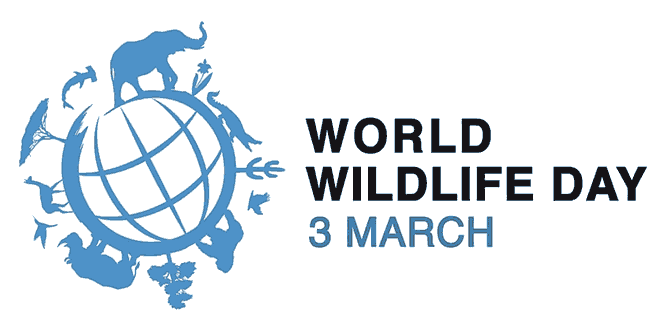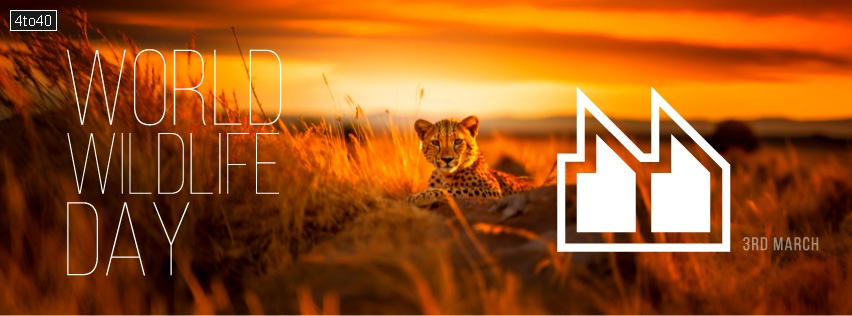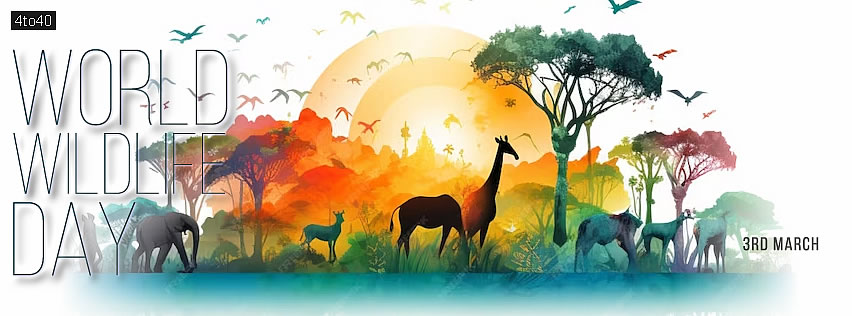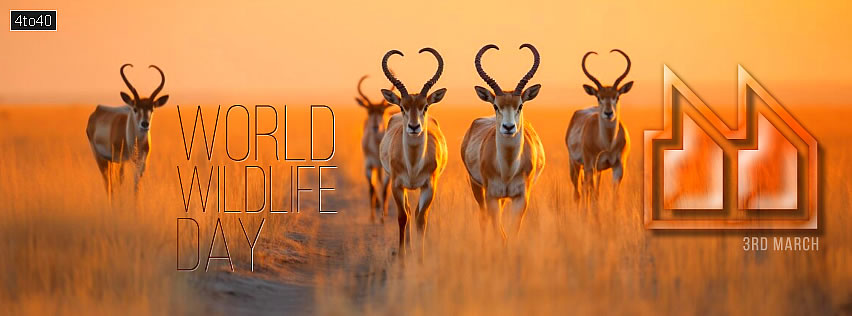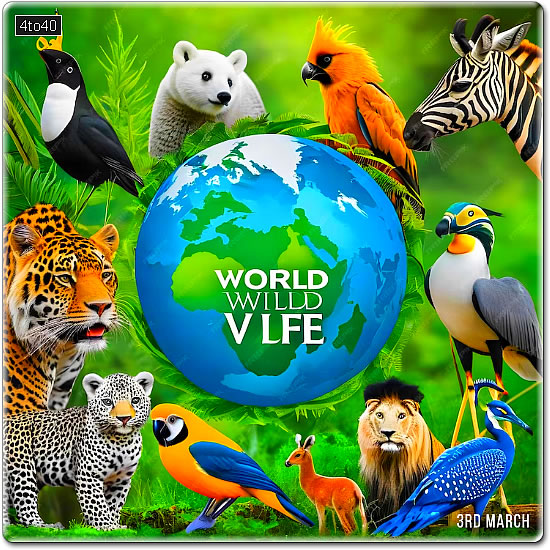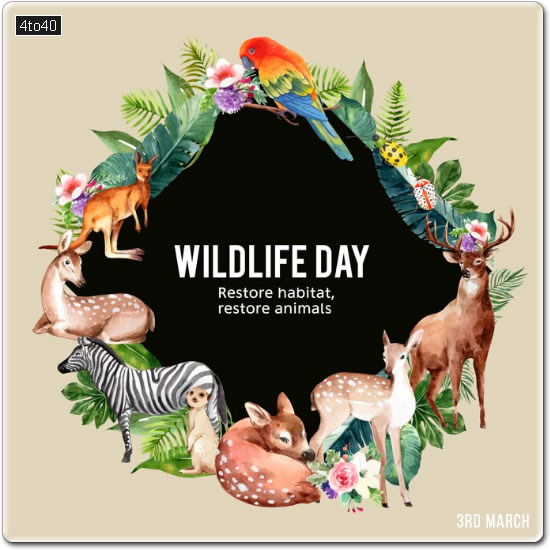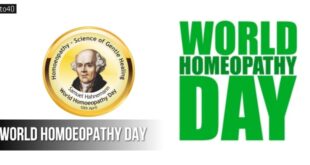World Wildlife Day – On 20 December 2013, at its 68th session, the United Nations General Assembly (UNGA), in its resolution UN 68/205, decided to proclaim 3 March, the international day of the adoption of the Convention on International Trade in Endangered Species of Wild Fauna and Flora (CITES) on the planet raise awareness and benefits fauna and flora in 1973, as World Wildlife Day, which was proposed by Thailand, to celebrate and raise awareness of the world’s wild fauna and flora.
UNGA Resolution:
In its resolution, the General Assembly reaffirmed the intrinsic value of wildlife and its various contributions, including ecological, genetic, social, economic, scientific, educational, cultural, recreational and aesthetic, to sustainable development and human well-being.
The General Assembly took note of the outcome of the 16th meeting of the Conference of the Parties to CITES, held in Bangkok from 3 to 14 March 2013, in particular Resolution Conf. 16.1 designating 3 March as World Wildlife Day, in order to celebrate and raise awareness of the world’s wild fauna and flora, and recognized the important role of CITES in ensuring that international trade does not threaten the survival of species.
The General Assembly requested the CITES Secretariat, in collaboration with relevant organizations of the United Nations system, to facilitate the implementation of World Wildlife Day.
World Wildlife Day Timeline:
1948: Formation of IUCN
- The International Union for Conservation of Nature (IUCN) is established, providing the foundation for global conservation efforts.
1961: WWF is Established
- The World Wildlife Fund (now called the World Wide Fund for Nature), a leading international NGO in wildlife conservation, is established.
1973: CITES Agreement
- The Convention on International Trade in Endangered Species of Wild Fauna and Flora (CITES), an international agreement protecting endangered wildlife, is established.
1993: UN’s Biodiversity Convention
- The United Nations Convention on Biological Diversity comes into force, establishing international biodiversity conservation goals.
2006: Google Earth Outreach
- The Google Earth Outreach program is launched, providing NGOs with technology to visualize environmental changes.
2013: First World Wildlife Day
- The United Nations General Assembly proclaims March 3 as World Wildlife Day, a day to celebrate and raise awareness about the world’s wild animals and plants.
Why is ‘World Wildlife Day’ celebrated?
The world is abounding with flora and fauna. All the species of plants, animals and birds contribute to the existence of eco system in their own unique way. Wildlife has coexisted with human habitation since ages and one has become an integral part of another’s life.
Wildlife benefits us in innumerable ways: providing food, medicines apart from maintaining climate and regulating rains and replenishing natural resources. Not to mention the oxygen that lush green forest provide at the same time acting as natural air filters by cleaning the air.
Recognizing the contribution of flora and fauna into the environment and acknowledging its essentiality for existence of life on earth, the United Nations constituted CITES (Convention on International Trade in Endangered Species of Wild Fauna and Flora) on 3rd March 1973 to protect and preserve the planet’s wildlife.
How to Celebrate World Wildlife Day:
Visit a Wildlife Sanctuary
- Take a day trip to your local wildlife sanctuary and learn more about the various species of animals that live there. It’s a great way to observe and appreciate the essential role that wildlife plays in our environment.
Plant a Garden
- Create a wildlife-friendly garden at home or in your community. Plant native flowers, trees, and shrubs that attract birds and other creatures. Be sure to avoid using pesticides and other harmful chemicals.
Organize a Cleanup
- Organize a beach or park cleanup in your area to help reduce the amount of trash and pollution that can harm wildlife. Invite your friends and family to join you so that you can make an even bigger impact.
Donate to Conservation Efforts
- Donating money or time to conservation organizations is an incredibly rewarding way to celebrate World Wildlife Day. There are plenty of organizations doing great work for endangered species, so choose one whose mission resonates with you.
Educate Yourself
- Take some time to educate yourself on the current threats facing wildlife around the world. Read articles, watch documentaries, and talk with experts in order to gain a better understanding of how we can protect our planet’s animals.
What is the need for ‘World Wildlife Day’?
Wildlife plays a very important role in the eco system and is essential for the existence of any form of life. Humans have existed together with wildlife for ages and have acknowledged the importance of wildlife.
Unfortunately we are losing our wildlife to factors like habitat extension, illegal trade or poaching, industrialization and population etc. The number of species of animals and plants are depleting at a fast pace and at an unprecedented rate never witnessed before.
Approximately 200 species of plants and animals are estimated to be getting extinct every 24 hours, which accounts to nearly 73000 species of plants and animals annually.
Considering the contribution of wildlife in balancing the eco system by causing rainfall, regulating climate, providing oxygen, providing medicine, herbs and food, increasing fertility of soil and regulating floods among various others.
We cannot afford losing the wildlife as it is imperative for the survival of humans. The earth with no wildlife will be a desolate and dry planet, impossible for survival of humans. Therefore, it becomes essential to protect and preserve the wildlife for our own good and for the longevity of the planet.
Celebrating our rich wildlife heritage on the “World Wildlife Day” is a good initiative in the way of protecting our flora and fauna. On “World Wildlife Day”, the threats to the wildlife are assessed and possible means of their elimination are devised. The celebrations are very important to raise awareness about the significance of wildlife.
Why World Wildlife Day is Important:
It raises awareness of endangered species
- World Wildlife Day is the perfect way for people to become aware of the plight of endangered species around the world. By learning more about how certain animals are at risk, people can take proactive steps to help protect them and put an end to their decline.
It promotes sustainable use of biodiversity
- World Wildlife Day is an important reminder that we must all do our part to protect our planet’s biodiversity. It urges us to practice sustainable consumption habits so that future generations can continue to benefit from nature and enjoy its wonders for years to come.
It encourages international collaboration
- The global community needs to work together if we hope to effectively conserve and protect endangered species. World Wildlife Day gives countries around the world an opportunity to unite in a shared cause and make sure that threatened wildlife has a fighting chance for survival.
World Wildlife Day Facebook Banners & Posters
What constitutes the greatest threat to wildlife?
Habitat Loss: World Wildlife Day
Habitat loss constitutes the greatest threat to the wildlife. According to a global estimate, approximately 50000 species are getting extinct annually due to deforestation and loss of habitat.
When humans expand their boundaries, they encroach into the wildlife, ultimately resulting in the loss of species’ natural habitat and their extinction. The extension of human settlement into the forest also results in man animal conflict, in which the animals ultimately pay the price.
Illegal Trade and Wildlife
Illegal trade cartels dealing in restricted wildlife products and poaching constitute one of the greatest threats to the wildlife. Every year when many species are pushed near to extinction, illegal traders make millions by killing animals and supplying their products.
There is still hope as many governments have taken initiative to protect wildlife, by forming strict laws for poachers and smugglers and by forming armed task forces dedicated to the protection of wildlife.
5 Eye-Opening Facts for World Wildlife Day
There are more than 8 million species on earth
- Current scientific estimates concur that there are over 8 million distinct species on Earth, contributing to an abundant biodiversity. However, only around 1.2 million have been formally identified.
Around 25% of mammals face extinction
- It’s estimated that one in four mammal species are threatened with extinction, emphasizing the need for wildlife protection measures.
Wildlife contributes to human well-being
- From the benefits of nature-based tourism on economies, to their role in various aspects of culture and spirituality, the wildlife contributes significantly to human well-being and quality of life.
Wildlife crime impacts over 7,000 species
- Illegal hunting, or poaching, and illicit trafficking of wildlife impacts over 7,000 species of birds, mammals, reptiles and marine creatures around the world.
Wildlife has a crucial role in balancing ecosystems
- Animals, plants and fungi all have crucial roles in their ecosystems. They are part of a complex web of life and contribute to the balance, resilience and diversity of their respective environments.
World Wildlife Day Greeting Cards
Themes:
- 2025: Wildlife Conservation Finance: Investing in People and Planet
- 2024: Connecting People and Planet: Exploring Digital Innovation in Wildlife Conservation
- 2023: Partnerships for Wildlife Conservation
- 2022: Recovering key species for ecosystem restoration
- 2021: Forests and Livelihoods: sustaining people and planet
- 2020: Sustaining all life on earth
- 2019: Life Below Water: For People And Planet
- 2018: Big Cats – Predators Under Threat
- 2017: Listen to The Young Voices
- 2016: The Future of Wildlife is in Our Hands
- 2015: It’s time to Get Serious About Wildlife Crime
 Kids Portal For Parents India Kids Network
Kids Portal For Parents India Kids Network
